Art of 3D Nail Design
In beauty and cosmetics, 3D nail designs are a stunning example of creativity and innovation redefining nail art. This complex nail art, frequently done in a nail studio, transports artists and fans to a world of textures, forms, and colors. Creative 3D nail designs study creative expression, technical mastery, and the relentless pursuit of beauty beyond the flat surface.
3D nail art uses materials to give patterns depth and life, turning the nail surface into a miniature canvas for sculptural artwork. Various materials allow unlimited inventiveness, from acrylics and gels to beads, rhinestones, and fabric. Using these materials demands patience, precision, and a profound grasp of their behavior under diverse conditions. Artists must balance the weight of new materials with the nail’s natural strength to ensure durability without compromising nail health.
A vision or topic leads the artist’s 3D nail design creation. Each design begins with creativity, whether inspired by nature, fashion, or abstract ideas. This step requires sketching to visualize concepts and plan element layouts. Color selection considers harmony, contrast, and design impact. Preparation is as necessary as application, requiring design skills and color theory knowledge.
Each 3D nail art application technique requires different expertise. Raised designs are often made with acrylic powder. It may be shaped before hardening, making it ideal for delicate flowers and elaborate lace designs. With its thick viscosity and curing processes, gel polish offers another 3D creative outlet. Layering gel polish with embossing or non-traditional materials creates beautiful three-dimensional effects.
Crystals, pearls, and metal charms make 3D nail designs more intricate and appealing. These features create visual depth and change light and shadow, making the artwork dynamic. Masterful application and specialist adhesives that attach securely to the nail without damaging it are needed to secure these embellishments.
Besides technical skills, 3D nail design is heavily affected by trends and culture. Style evolves, inspiring nail artists from fashion week runways to social media. This continual change forces artists to remain ahead of trends, try new materials, and push the limits of their little canvases.
Mastering 3D nail art requires education and ongoing development. Workshops, online tutorials, and courses help artists improve their skills, learn new approaches, and share ideas. This educational path continues due to the constant release of new nail art materials, tools, and methods.
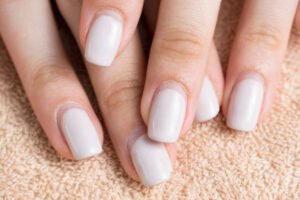
The ability of 3D nail art to tell a story or send a message is captivating. Seasonal themes can capture autumn’s foliage and acorns or winter’s snowflakes and icicles. 3D nail patterns communicate personal milestones and celebrations, making each creation as unique as the recipient.
The technical execution and upkeep of 3D nail patterns are both problematic. Wearers must be careful of their nails during regular work to avoid damaging the pattern. Despite these obstacles, 3D nail painting remains popular due to self-expression and the thrill of wearing art.
As we learn to create 3D nail designs, we explore a world where beauty is sculpted, painted, and adorned. We are invited to enjoy the artistry and stories behind each curve and shape. Skilled artisans turn nails into wearable art galleries, reflecting human creativity and the search for beauty in all its forms.
Innovation, artistic enthusiasm, and the shifting wants of those who wear these tiny yet profound manifestations of art drive the evolution of 3D nail art.
Thermal Nail Polish Mastery
Nail art constantly evolves, and thermal nail paints offer an interactive experience beyond manicures. This revolutionary product, loved in many nail studios, changes color with temperature, creating unpredictable and attractive patterns and effects. Thermal nail paints’ chameleon-like qualities and creative challenge to artists and fans stretch the limits of what may be achieved on our tiny nail canvases.
To master thermal nail paints, you must grasp the science underlying them. Leuco dye microcapsules in these polishes change transparency and opaqueness with temperature. This reaction causes stunning color changes that might represent emotion, environment, or even a hand. Manicures can fluctuate with the wearer’s temperature, weather, or coffee heat. Therefore, artists must account for this.
The creative process begins with choosing the correct thermal polish. The industry offers a wide range of colors and transition effects, from subtle changes within a hue to spectacular changes across colors. The polish will significantly affect the design’s impact, with some artists using the thermal effect as a subtle accent and others using vital alterations as the focal point.
Nail preparation is critical to successful thermal polishing. Smooth, clean surfaces optimize color transition and application. Some thermal polishes use a base layer to protect the nail and produce a homogeneous canvas. Precision is needed since polish thickness affects color change intensity and manicure durability. Too thin a layer can cause uneven transitions, while too thick can prevent temperature variations from affecting the polish.
The art of thermal nail polishes is in design execution. Ombré gradients, stamping, or hand-painted features that match color transitions may increase the thermal impact. Some designers use glitter, flakes, or enclosed objects to enhance depth and interest. Predict how the design will change to keep the artwork consistent and appealing during the color shifts.
Layering thermal polishes can generate intricate and unexpected effects, making it an advanced method for innovators. Artists can create designs that reveal hidden layers and patterns as nails pass through varied thermal settings by carefully picking colors with distinct transition temperatures. This technique needs a thorough understanding of materials and a visionary design approach, as the artist must anticipate and plan for various outcomes.
Finishing touches are important in thermal nail art because the topcoat affects polish performance. Use a high-quality, flexible topcoat to protect the manicure without inhibiting heat response. Topcoats can also boost polish shine, highlighting color transitions. Some thermal polishes fade in the sunshine. Thus, UV protection can help preserve color brilliance.
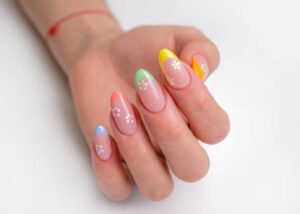
Thermal manicures must shield nails from severe temperatures that could cause color alterations. Thermal polishes are dynamic, but abrupt temperature fluctuations might cause surprising results. Users should be aware that cooking, bathing, and outdoor sports may momentarily modify their manicures.
Thermal nail polishes let you experience nail art. Wearers and observers can tinker with color and temperature to discover new design elements in these polishes. Mastering thermal polishes requires artists to embrace the medium’s fluidity and unpredictability to create manicures as dynamic and complex as its wearers.
The nail art community’s fascination with thermal nail paints grows due to their unlimited creative possibilities. These polishes depict moments, feelings, and the ever-changing beauty of the planet, from a tender embrace to a chilly breeze. Skilled painters use thermal nail paints to convey stories, turning nails into live art that changes and evolves, creating a unique, constantly intriguing beauty.

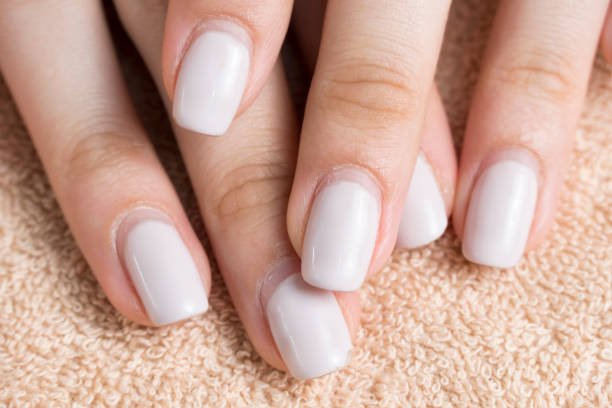


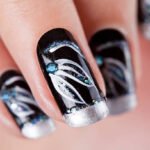

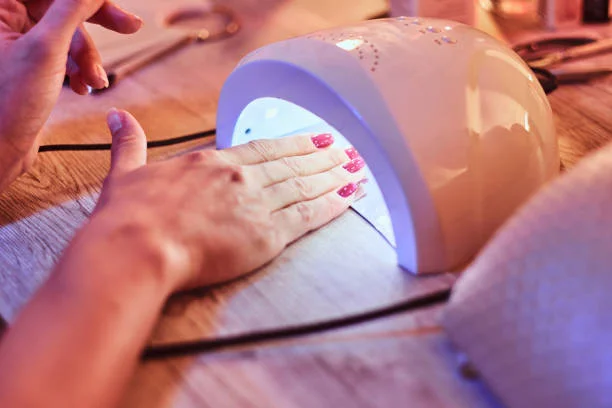

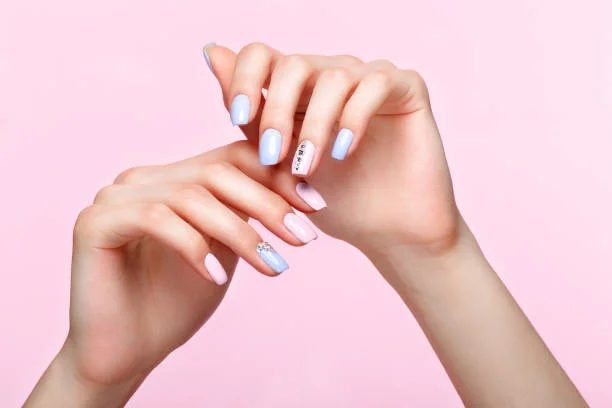
Leave a Reply